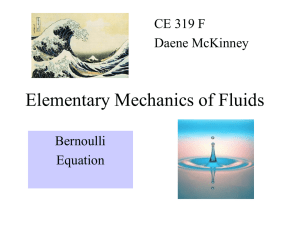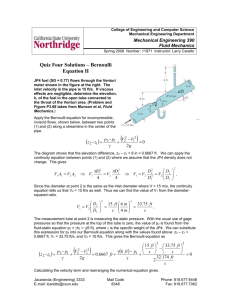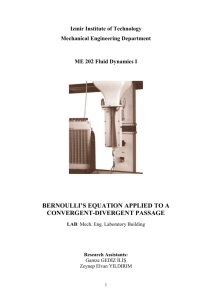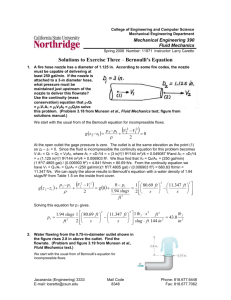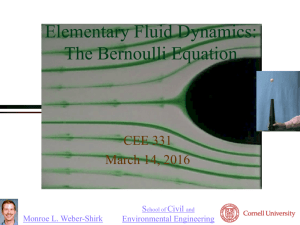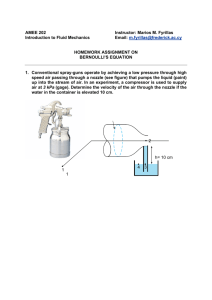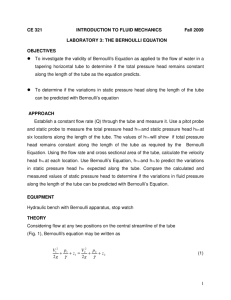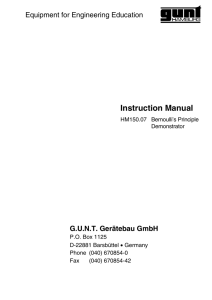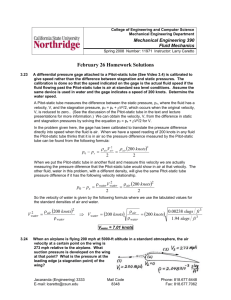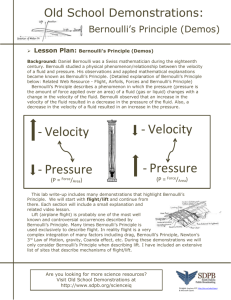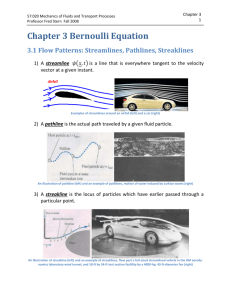Flow Rate Measurement
advertisement
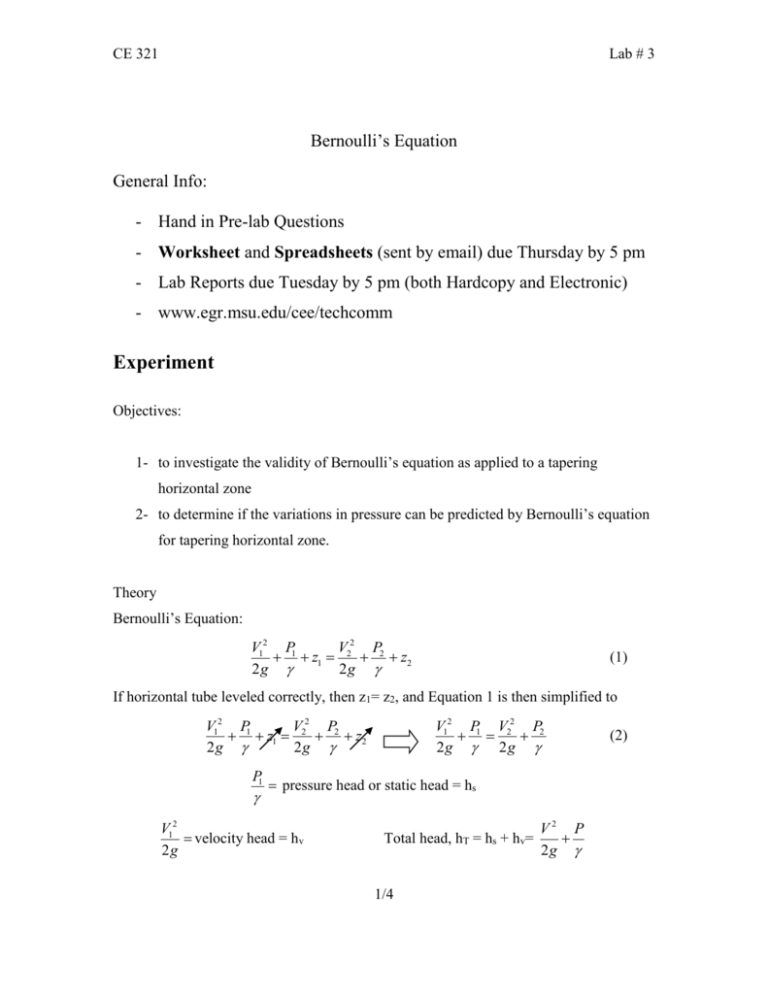
CE 321 Lab # 3 Bernoulli’s Equation General Info: - Hand in Pre-lab Questions - Worksheet and Spreadsheets (sent by email) due Thursday by 5 pm - Lab Reports due Tuesday by 5 pm (both Hardcopy and Electronic) - www.egr.msu.edu/cee/techcomm Experiment Objectives: 1- to investigate the validity of Bernoulli’s equation as applied to a tapering horizontal zone 2- to determine if the variations in pressure can be predicted by Bernoulli’s equation for tapering horizontal zone. Theory Bernoulli’s Equation: V12 P1 V2 P z1 2 2 z2 2g 2g (1) If horizontal tube leveled correctly, then z1= z2, and Equation 1 is then simplified to V12 P1 V2 P z1 2 2 z2 2g 2g P1 V12 P1 V22 P2 2g 2g pressure head or static head = hs V12 velocity head = hv 2g V2 P Total head, hT = hs + hv= 2g 1/4 (2) CE 321 Lab # 3 Bernoulli made some assumptions for his equation to work: 1. In viscid flow, constant viscosity (no shear stress in the tube) 2. Flow is steady 3. Points 1 and 2 which you are comparing are in the same streamline 4. density of the fluid is constant 5. System is not accelerating Keep in mind these assumptions while taking measurements in the lab. Main Objective: is Bernoulli’s equation validated? Why? or Why not? Any assumptions violated? hT1 hT2 hT3 hT4 hT5 hT6 In the Data Sheet: hsm = static head measured and hTm = total head measured Measurement Points: Tube Cross Section A B 0.00 50.00 Convergin g CD E F 100.00 Position Along Tube (m m ) Diverging Piezometer: reads static heads or pressure heads Pitot Probe: total head Volume will be taken using a volume of 5 L (because of time concerns) 2/4 CE 321 Lab # 3 Analysis: Follow in coursepack A. Find Q = V/t (in table 1) V12 B. Calculate velocity head : hvc = 2g were V = Q/A, the area of the tube is given in the spreadsheet C. Total head best estimate: is the 1st measurement of total head taken at point A (hTA) for each flow rate. a. Is the total head constant? b. Converging different from diverging? c. Compare total head calculated by Bernoulli to the total head measured at each point. D. Predict hsc : hsc = hTm- hvc (from part B); hsc is the static head calculated, hTm is the total head measured, and hvc is the calculated velocity head. E. Make graphs in excel: show total measured head, static head and velocity head, compare total head measured to the total head nest estimate; compare static head measured to the calculated F. Converging Section (points A-E): a. Describe how htm varied in converging section (trends) b. How does total head best estimate compare to the measured total head c. Are all assumptions satisfied? d. Describe the static head measured e. Compare static head measured to calculated static head f. Can the static head be predicted by Bernoulli? G. Do the same analysis for the Diverging Section (points E-F) H. What happens as flow rate increases or decreases? Describe changes in each section for total head and static head 3/4 CE 321 Lab # 3 I. Comment on the validity of Bernoulli’s equation for the convergent and divergent sections. Tube Cross Section 0.00 50.00 100.00 Position Along Tube (m m ) Eddies form, because of the sudden expansion creating shear stress Velocity increases in the converging zone due to the change in are of the tube; when the tube diverges the fluid does not contort to the shape of the tube, creating pockets of “space”. As this space fills up it creates eddies and shear stress, causing the fluid to lose energy in the process, creating a head loss. REPORT: Combine Results and discussion for clarity purposes Break-up discussion using the objectives for the converging and diverging portions of the tube. 2 Objectives = 2 conclusions (broken into parts each) 4/4
